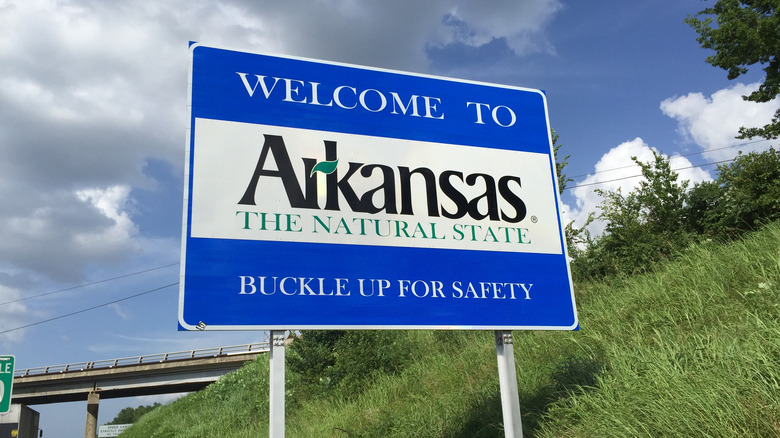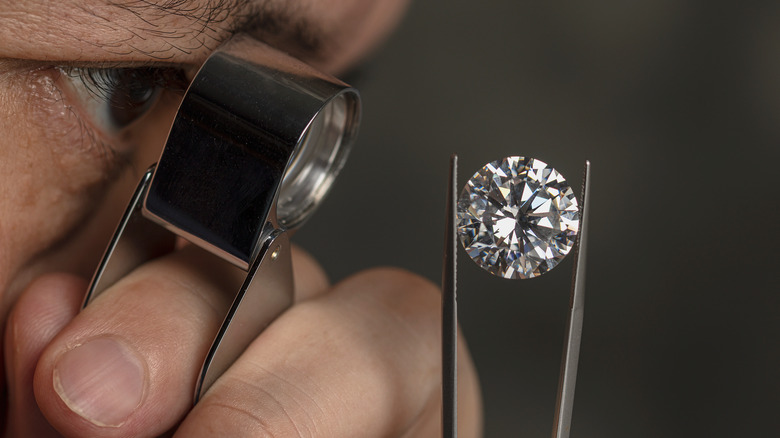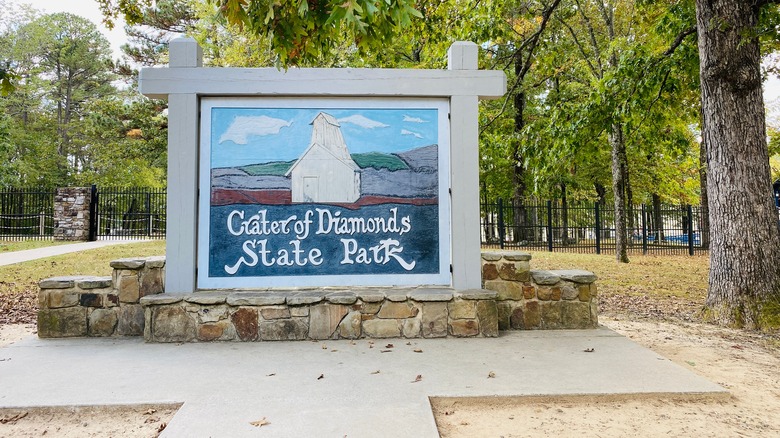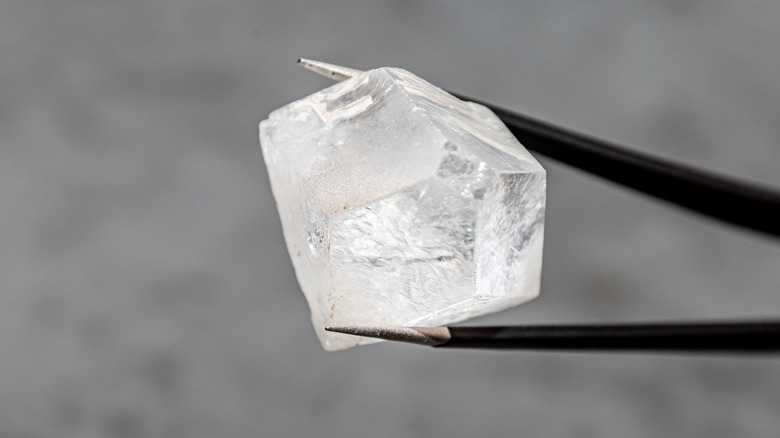The Arkansas Park Where Diamonds Are Yours For The Taking
Arkansas, the home of Bill Clinton, Johnny Cash, and Billy Bob Thornton, is a bit of a mixed bag. It's the fourth-poorest state in the country, according to World Population Review, and it comes in quite low in health care, education, and infrastructure, according to US News & World report. On the other hand, the breathtaking natural beauty of the state, particularly in its rugged northwest, can't be ignored. Arkansas is called "The Natural State" for a reason.
Speaking of Arkansas' natural resources, you may be surprised to know that the state is the site of the only active diamond mine in the U.S., according to Geology, although it's less of a commercial mine and more of a tourist attraction where the mining is outsourced to visitors. "A few hundred" carats are actually "mined" there each year (and here "mining" means sifting through mud and grit on the surface and not "going underground into a mine"), and visitors are able, nay encouraged, to take home whatever they find.
Of course, diamonds are neither rare nor valuable, and most of what visitors find, though scientifically diamonds, are worthless bits of carbon that are naught but souvenirs. But sometimes, a visitor will find a gem-quality stone and sell it for thousands or even tens of thousands of dollars.
There Are Diamonds And Then There Are 'Diamonds'
As mentioned previously, diamonds are neither rare nor valuable. As the International Gem Society explains, diamonds are actually quite abundant. However, the types of diamonds that adorn jewelry are different from, say, the diamonds used in industry. The type of diamond you pay hundreds or thousands of dollars for are clearer, shinier, and have a more desirable color than their peers, and are comparatively rare. Further still, their price is artificially inflated by an international conglomerate. And, when compared against the per-carat price of other gemstones, such as rubies and alexandrite, they're still not particularly valuable.
All of this is to say that, though there are diamonds basically there for the taking at Arkansas' one and only diamond mine, the overwhelming majority are going to be too small, too discolored, and/or too opaque to have any real value, and will basically be keepsakes from your visit to Arkansas. A few lucky people have, however, found the types of stones that jewelers are keen to use, and have made some money from their finds (more on that later).
Crater of Diamonds State Park
Arkansas' Crater of Diamonds State Park (pictured above) was at one time, according to the facility's website, an actual, functioning, commercial diamond mine. All the way back in 1906, a farmer discovered a diamond in the rich volcanic soil of his farm (the area had been a volcano untold millions of years ago), and soon enough, the nearest town was the center of a diamond-mining boom. The fun didn't last long, however, as lawsuits, a fire, and generalized failure bedeviled the operation. Long story short, by 1969 the site was a commercial tourist attraction, and by 1972 it had become the property of the State of Arkansas and turned into a state park.
Visitors pay a $10 fee to search for diamonds, and if they're keen to spend a bit more money, they can rent equipment for a few more bucks (plus a deposit). On some occasions, such as after a rain, the diamonds are literally there on the surface of the ground. Failing that, most visitors use a screening system to separate the schmutz and grit from their quarry and, with some luck, may even wind up taking some specimens home.
Sometimes Visitors Get Lucky
The Crater of Diamonds State Park is, of course, anything but a get-rich-quick scheme. If visitors take home anything at all, it's likely to be a worthless chunk of carbon a fraction the size of a grain of rice and not even worth (monetarily, at least) the price of their admission ticket. Strictly by way of example, the "Latest Finds" section of the facility's website lists specimens recorded over the previous few days; in the period between October 9 and October 17, 2022, visitors collectively found a few carats of diamonds, the largest find being .73 carat, most of the rest a fraction of that. Of course, what isn't recorded is the opacity or other properties of the rocks that would make them valuable to jewelers, but considering what is known about diamonds generally, and about the diamonds from this area specifically, it's a safe bet that, collectively, the diamonds are worth somewhere between jack and squat.
On very rare occasions, however, someone will find a gem worth four or more figures. For example, in October 2021, as CBS News reports, a couple found a 4.38 carat yellow diamond there. As of the date of that article, the couple hadn't had it appraised. Three decades earlier, however, in 1990, a visitor found a 3 carat white diamond that was eventually sold for around $35,000, and in 2015 a visitor found an 8.5 carat white diamond now estimated to be worth about $1 million.



